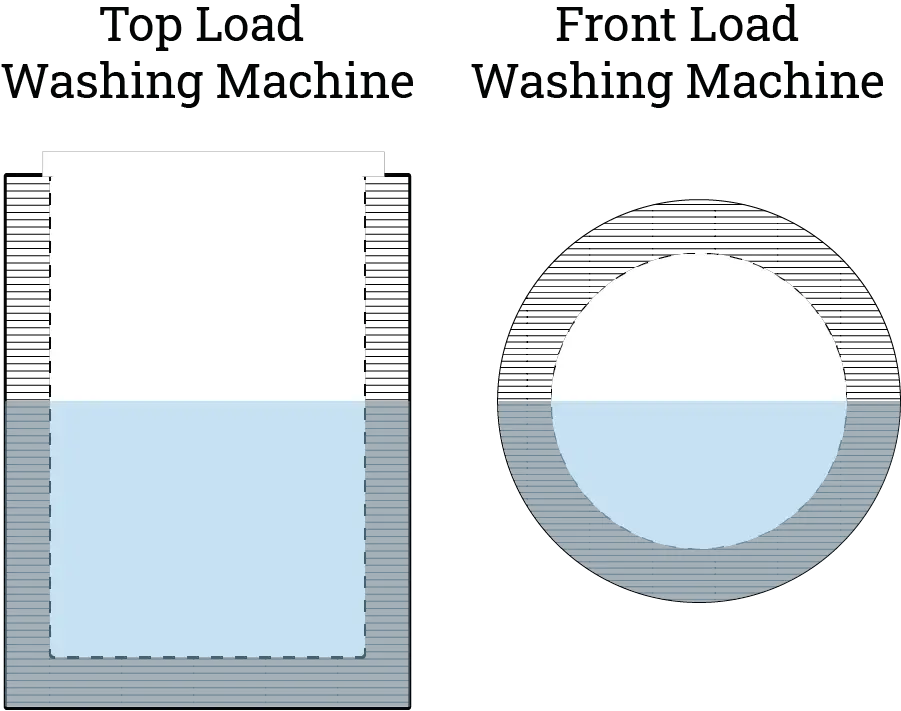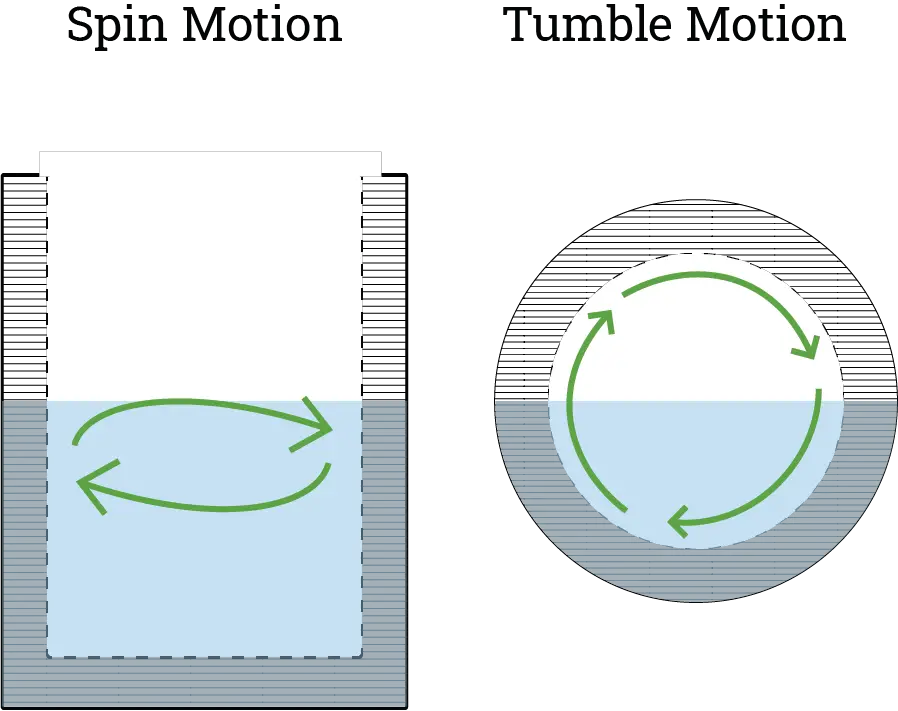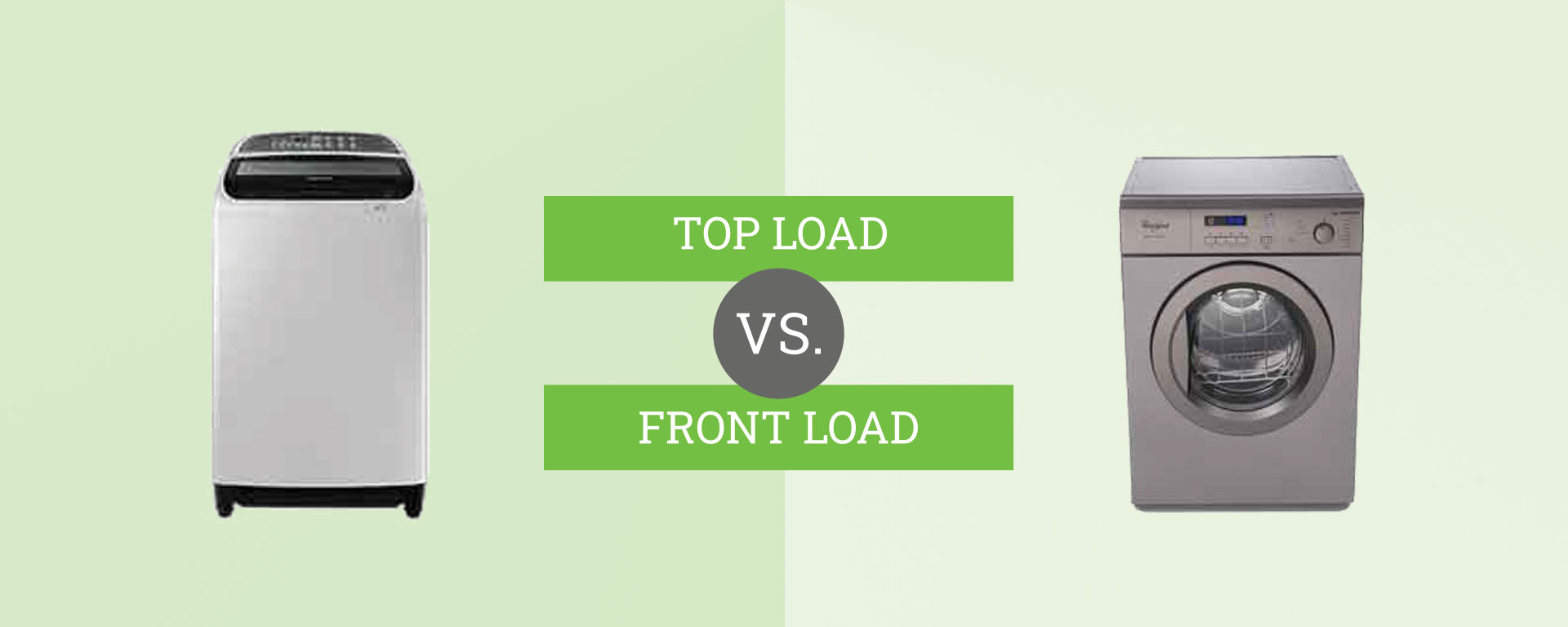Buying a fully automatic washing machine is the best way to make the chore of doing the laundry easier and more convenient. There are two types of fully auto washing machines available in the market: front load and top load. Each of these types have their own pros and cons, and in this post, we will flesh out the front load vs. top load washing machine debate to see which one is the best option for you.
As the name implies, a front load washer opens from the front; they have higher-end features, consume less water and does less damage to your clothes compared to a top load washing machine. However, they tend to be way more expensive than the latter.
In this article, we will explain our rationale on the front load vs. top load washing machine debate to help you decide which model is better for your lifestyle and needs.
The differences between a front load vs. top load washing machine
Both the front load and the top load washing machine have an inner and outer drum design. This design works like so:

The outer drum is the primary container of the water; this is fixed in its position and does not move. Meanwhile, the inner drum is where you put your clothes in; this drum rotates during a wash cycle or during spin drying. The holes on the inner drum’s sides lets the water in from the outer drum during a cycle, and these holes also serves as the outlet for the water during the spin drying process.
The difference between a top load and a front load washing machine is in the way its inner and outer tubs are positioned. For a top load, the drums are standing upright; but for the front load, its drums are positioned horizontally. Here are the implications of that design:
1. Convenience
Both of these washing machines make the chore of doing the laundry much easier; but the top load is easier to use than a front load washer. Here’s why:
Because of the low position of its door, you’ll have to bend down to load and unload a front load washing machine. This can be an issue for people with back problems.
Also, you’ll have to mind the door swing of the front load as it can pump into other fixtures when the laundry room is cramped. This isn’t a problem for a top load as head room isn’t an issue for most laundry areas.
Speaking of doors, there is no way to add more laundry during a cycle in a front load washing machine. Since the opening of its tub is at its side, opening the door mid-cycle will let all of the water out. For a top load? Just open the lid, then shoot and scoot.
Granted, front load washing machine manufacturers have added a way to add forgotten items mid-cycle such as Samsung’s AddWash feature. However, the price jump may not be worth it.
Winner: Top Load. Its top-opening door is much more convenient when it comes to loading and unloading laundry as well as adding forgotten items mid-wash.
2. Price
While both top load and a front load washing machines tend to be expensive, a top load model is typically more affordable compared to a front load model.
If we take this (rather crude) example, here are the average SRPs of the 7.0kg – 7.5kg capacity category of top loaders, and front load washers in Abenson’s website (taken on 3/4/21):
| 7.0kg – 7.5kg Capacity | Average SRP |
| Fully Auto (Top Load) | ₱14,406 |
| Fully Auto (Front Load) | ₱34,629 |
As you can see, a front load washing machine is, on average, 2.4x the price of a top load washing machine of the same capacity.
While front load washers may be more expensive, they typically come loaded with high-end features that top load washers do not have.
Winner: Top Load. It is the more economical between the two. However, it typically lacks the high-end features that a front load washer has.
3. Operating Cost
We are going to split this into two sections: one for energy consumption and the other for water consumption.
3a. Electricity Consumption
Both a top load and front load washing machine have comparable levels of electricity consumption. However, if the model has an electric heating function (mostly found on front load fully automatics), it jacks the energy consumption way up.
Winner: It’s a draw.
3b. Water Consumption
According to Samsung, these are the amount of water consumption of a top load and a front load washing machine:
| Type | Water Consumption Per Cycle |
| Fully Automatic Top Load | 140L |
| Fully Automatic Front Load | 60L |
They estimated that a front load washing machine will consume about 58% fewer water compared to a top load washing machine. Why so?

A top load uses a horizontal spinning motion to clean your clothes. This means that your clothes need to always be submerged in water for it to be caught by the spinning current.
On the other hand, a front load washing machine uses a tumbling motion to move your clothes in and out of water. Thus, you won’t need to fully submerged your clothes under water in a front load washer.
Winner: Front load. Its horizontal tub design allows it to use less water compared to a top load washer.
4. Cleaning Performance
Front loaders typically clean better and are much more gentle on your clothes compared to top load washing machines.
Top Loaders open at the top. If you peer inside the door, you will see either a circular disk (pulsator/impeller) or a tall pillar (agitator) at the middle. This part forces the water and clothes at in the tub to go in a circular motion. However, the friction from the clothes rubbing together and from the agitator itself can be damaging to clothes in the long run.
A front load washer does not have an agitator; instead the drum itself spins, and with the aid of gravity, the force of the rotation moves the clothes through the water and detergent. The lack of an agitator makes front loaders more gentle on clothes.
Not only that, front load washers also use a different kind of detergent from that of other washing machines. These are typically labeled as “HE” or high-efficiency, like this.
Winner: Front load. Its design makes it gentler on clothes. However, while their required laundry detergent can clean better compared to regular detergents, they can be a lot more expensive.
Conclusion
With a plethora of washing machine models available in the market, it can be hard to choose the right model for you.
Always weigh in the pros and cons of a front load vs. a top load fully automatic washing machine. Understand how much you are willing to pay for the added features and benefits of a front load model.
Sources
What is Water Consumption per Wash? (2020, October 13). Samsung India. https://www.samsung.com/in/support/home-appliances/what-is-water-consumption-per-wash/

Miguel Mores worked for 5 years as a member of the product management team for a home appliance company in the Philippines. He started 101appliance to answer the most common customer questions that he has encountered during his time in the industry. He now works in the digital marketing field and manages a small online bookstore on the side.


You overlooked that the top loaders don’t have a drain pump and just dump the tub water in a floor drain. Highly inconvenient for basements or attics that have no floor drain that require drain pumps to drain in a elevated sink or pipe.